
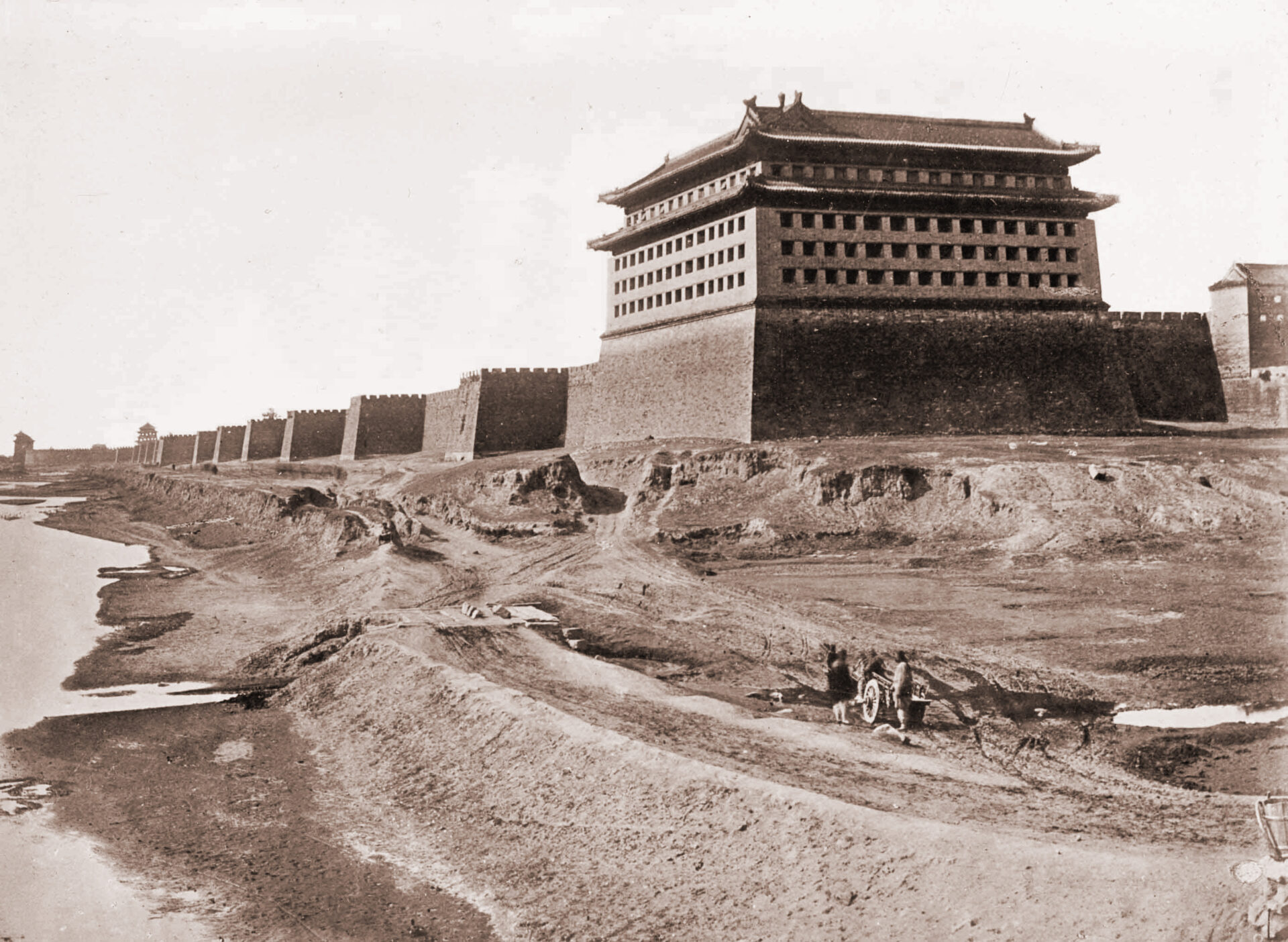
Lai Fong
1870s
Albumen silver print
21 x 29 cm
From the Loewentheil Collection
黎芳
1870年代
蛋白印相
21 x 29 厘米
洛文希尔收藏
Lai Fong was one of the first Chinese artists to make photographs of Beijing. The famous photographer journeyed from Hong Kong to Beijing with his camera, glass plates, and photographic chemicals in the late 1870s. The resulting photographs are masterpieces depicting China’s capital city.
The Loewentheil Collection holds the first photographs ever made in Beijing including many by Lai Fong. These photographs, significant developments in the art of photography in China, are crucial to understanding Chinese culture at a pivotal point in history.
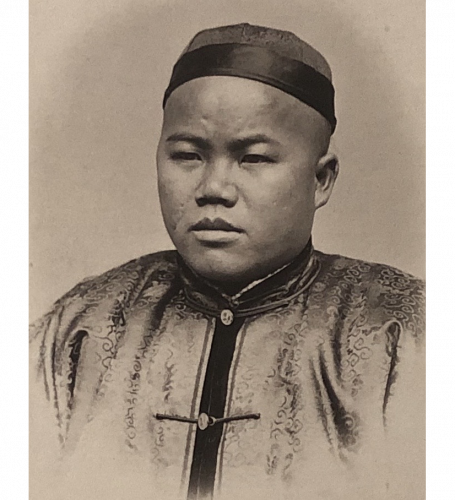
Unidentified Artist. Portrait of Lai Fong. c.1869. Cabinet-sized albumen print. Scottish National Portrait Photography Collection.
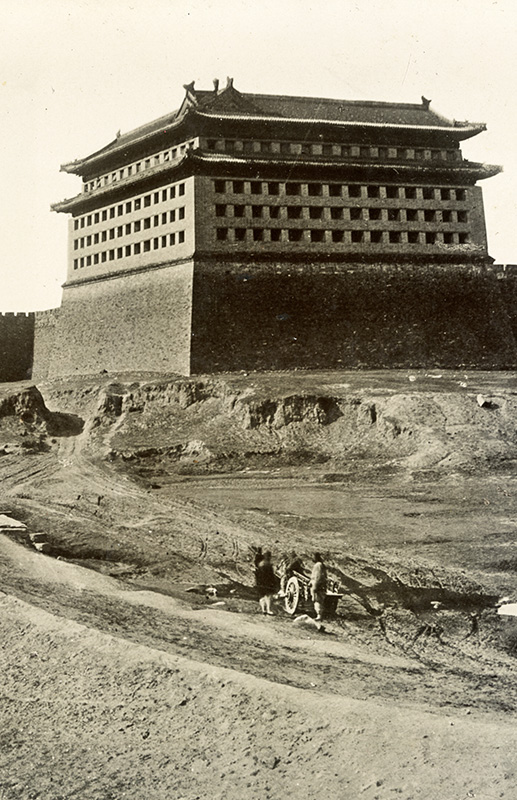
Lai Fong captured this powerful image of the imposing great southeast corner tower and Ming Dynasty inner city wall in the 1870s. To compose this view, Lai Fong positioned his camera facing west along the southern wall of the inner city. Beijing’s inner city wall was constructed in 1419 during the Ming Dynasty. The ancient tower appearing in the photograph was constructed between 1436–1439. The Southeast Corner Tower of the Inner City is the only surviving corner guard tower in Beijing and the largest ancient guard tower in all of China. It is now a state-protected historical site.
Views of Beijing’s Tower Gate and Inner City Walls During the Late Qing Dynasty from the Loewentheil Collection
Lai Fong’s photograph of the great southeast corner tower and Ming Dynasty inner city wall is an extremely rare view of the site before it was transformed by by modernization. During the late Qing Dynasty, decades after Lai Fong photographed the southeast guard tower and Ming inner city walls, railway tracks were built along the wall as part of China’s first long-distance railway project. Begun in 1898, the railway was a great commercial success increasing business opportunities in Beijing.
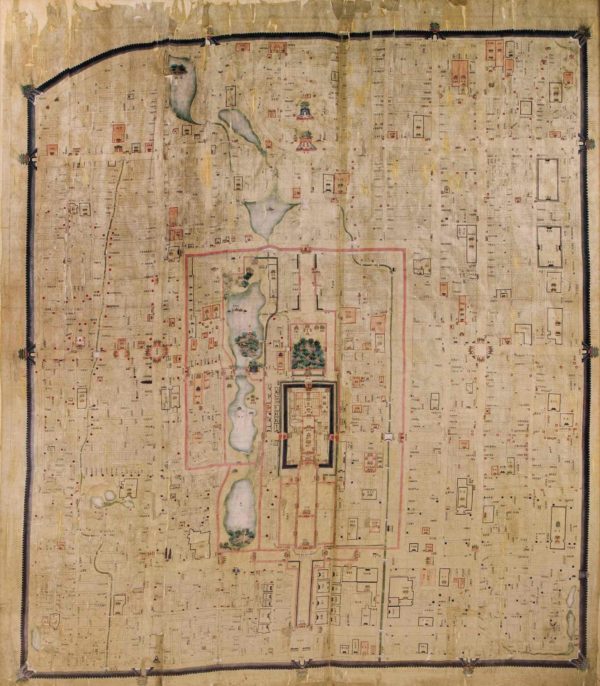
Beijing's Guard Towers & Inner City Walls
Guard towers dominated the four corners of Beijing’s inner city walls. The massive solid walls, constructed of rammed earth and lined with brick, stood almost 40 feet high and were topped with defensive architectural elements that rose 6 feet higher. All of the guard towers in Beijing were designed in the multi-eaved Xieshanding style.
Map of Beijing, painted on silk [China, Daoguang Period], (1820-1850)
174 x 145 cm. Watercolor and ink on silk. Extensively annotated with the names of buildings and streets. From the Loewentheil Collection.
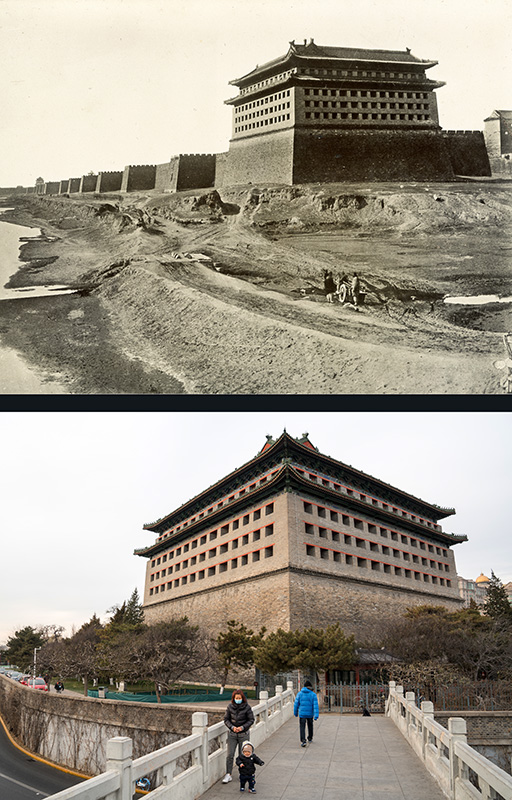
Today the section of the ancient wall appearing in Lai Fong’s photograph is protected as a key national cultural relic. Beijing Ming City Wall Ruins Park preserves the longest surviving section of the ancient inner city wall, measuring 1.5 kilometers. It also protects the ancient tower gate, which is the largest surviving guard tower existing in China and the only surviving guard tower in all of Beijing. The site includes thirty-eight acres of green space to the south and east.
The Ming inner city walls survived for nearly 550 years until the 1960s when most of the gates and walls were torn down to build the Beijing Subway, which operates beneath where the city walls once stood.
One of the Twenty Poems about the Burgeoning of Spring
生春二十首·其一

Where does the early spring burgeon?
It burgeons in the thick snow.
The snow shines on the terrace, as if lit by the moon,
and rests on the tiles, through which the wind blows.
The snow covering the ridge-mounting timbers glistens brilliantly,
and that on the pendant eaves melts and drips.
The palace crows shelter themselves from the cold.
The branches of trees extend into the groves of ten thousand years old.
-- Hongli (Emperor Gaozong of the Qing)
何处生春早,
春生积雪中。
照墀常若月,
栖瓦不妨风。
扶脊离离闪,
垂檐滴滴融。
宫鸦能避冷,
枝入万年丛。
——清高宗弘历
For permissions and inquiries please contact:
446 Kent Avenue PH-A Brooklyn, NY 11249 USA